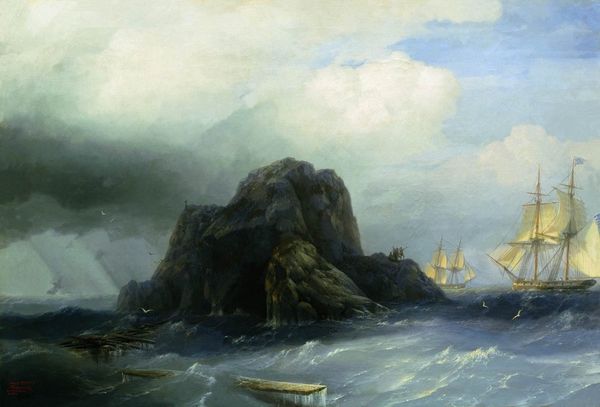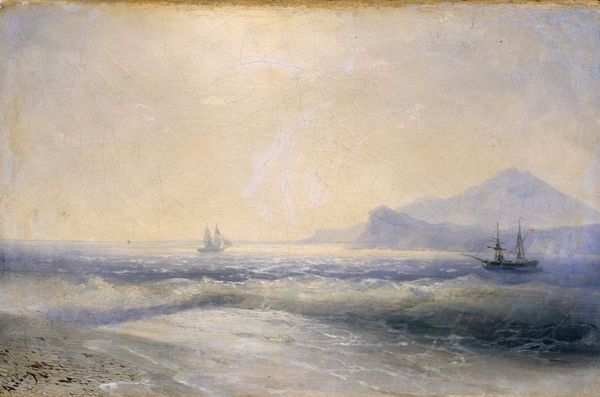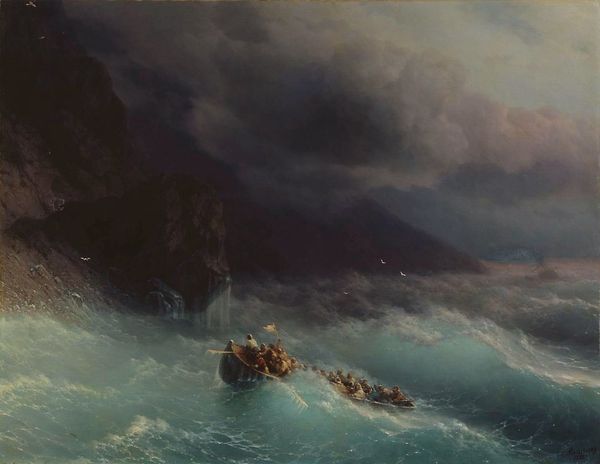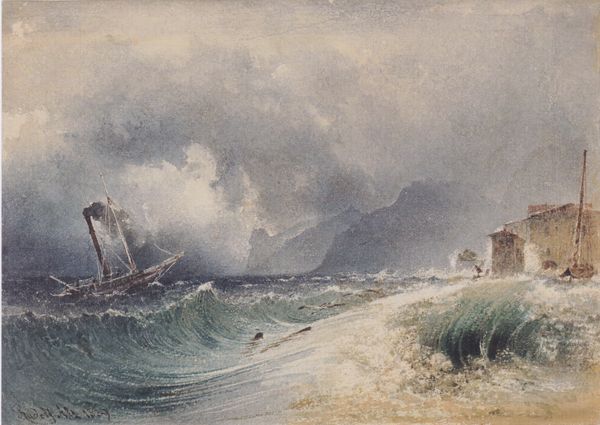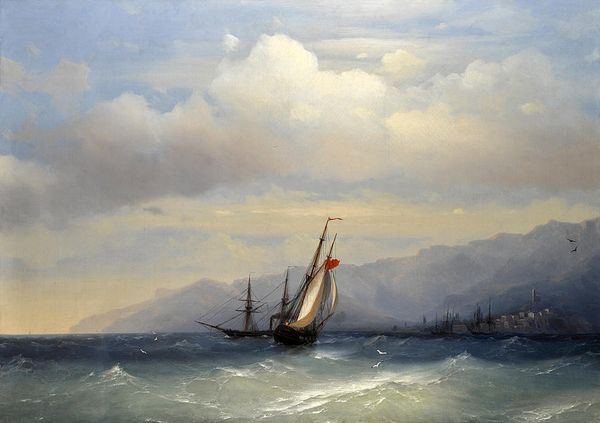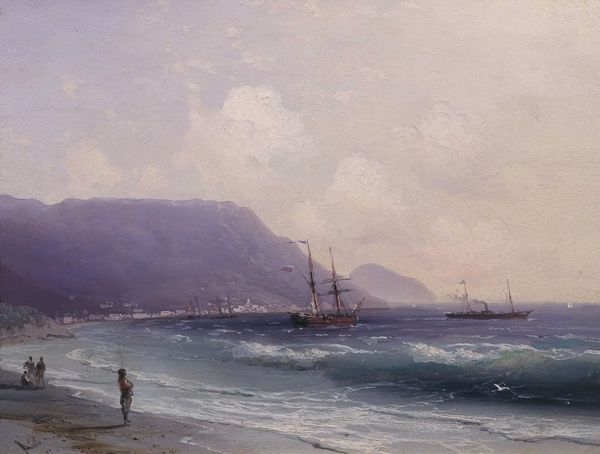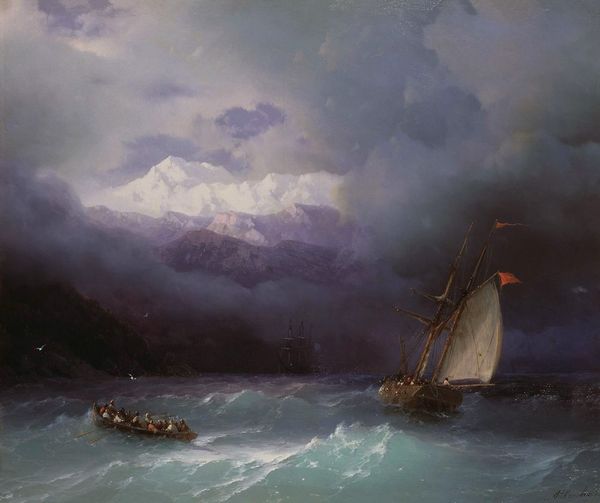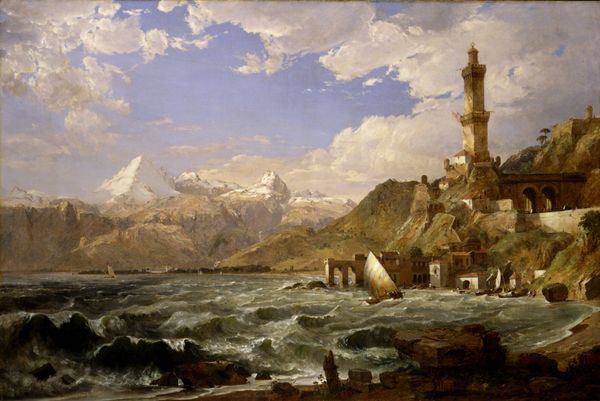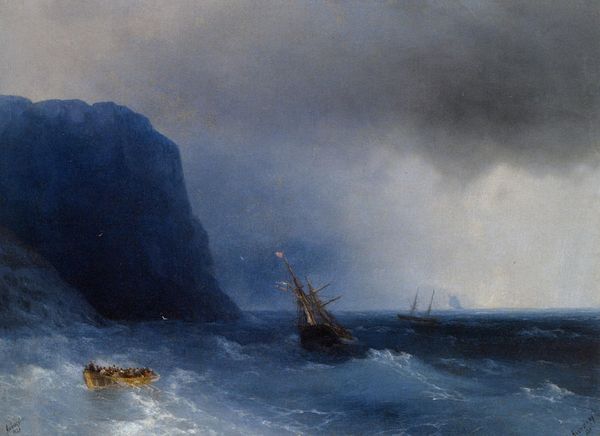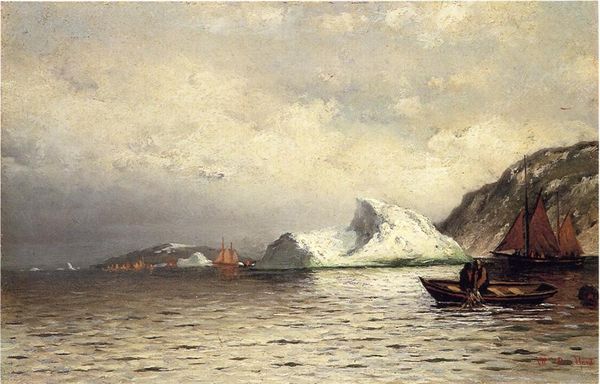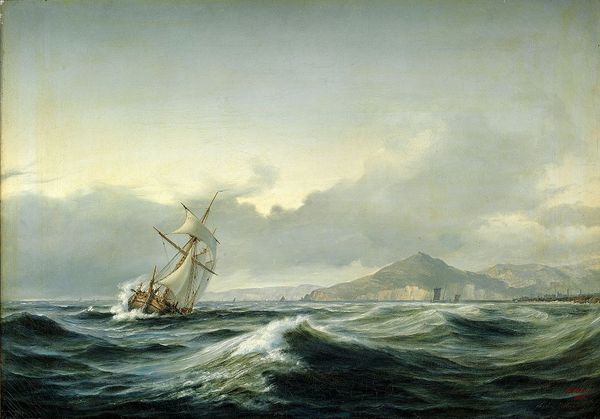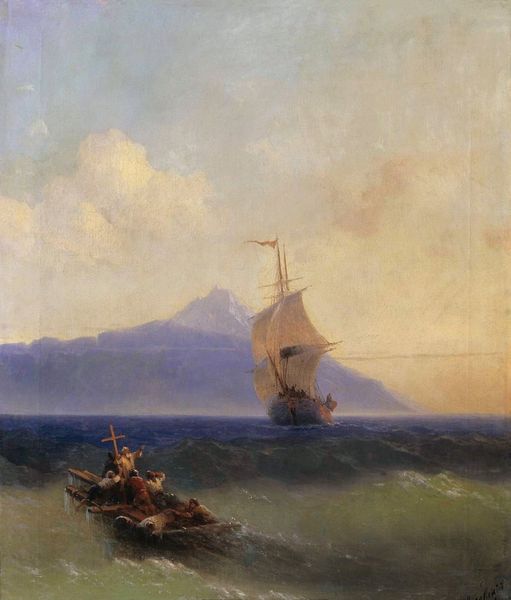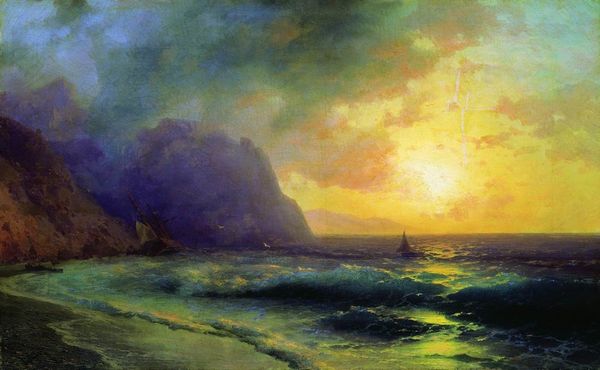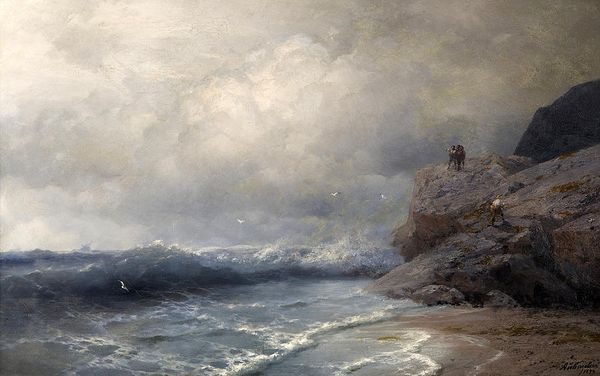
Copyright: Public domain
Curator: Lev Lagorio's "Lofoten Island," painted in 1895, captures a stark yet compelling seascape. Editor: Immediately, I'm struck by the painting’s somber, almost mournful, quality. The muted palette contributes significantly. Curator: Indeed. Looking at the production of the artwork, we should recognize the late 19th century context. Oil paints were becoming increasingly accessible, enabling artists like Lagorio to achieve such evocative textures. His brushstrokes, though visible, blend to suggest the tumultuous nature of the sea and sky. What can you observe on technique and formal composition? Editor: The composition hinges on a contrast between the solidity of the rocky outcrop in the foreground—anchored by the masonry pillar—and the ephemeral nature of the sky and the churning sea. Note how the light catches the waves. And there’s that faint suggestion of distant snow-capped peaks under diffused lighting. It evokes a sublime vastness. Curator: And how might we interpret that pillar in terms of social history? Its presence is rather ambiguous. Was it a navigational aid, a territorial marker, or something else entirely? What materials were locally available to construct this kind of structure? I think about those unknown laborers facing the brutal elements as they worked to construct that pillar. Editor: I see the pillar, materially, as a point of contrast to the natural surroundings, interrupting the horizon. Its verticality emphasizes the horizontal expanse of the water and the low, heavy sky. It draws the eye upward, and suggests, perhaps, human resilience in the face of overpowering nature. But observe also how its crumbling state suggests the limits of that resilience. Curator: I find myself wondering what materials other landscape artists working during this period might use. Was it a regional approach? Were some artist workshops creating specific pigments? These would impact Lagorio's artistic choices in crucial ways, don't you think? Editor: Absolutely. Ultimately, it's a landscape that holds our gaze, making us aware of the dialogue between structural elements and the sublime qualities of natural forms. Curator: Precisely. It brings to the forefront the material reality that shaped human experience in a specific geographical setting, one that required perseverance and resourcefulness.
Comments
No comments
Be the first to comment and join the conversation on the ultimate creative platform.
